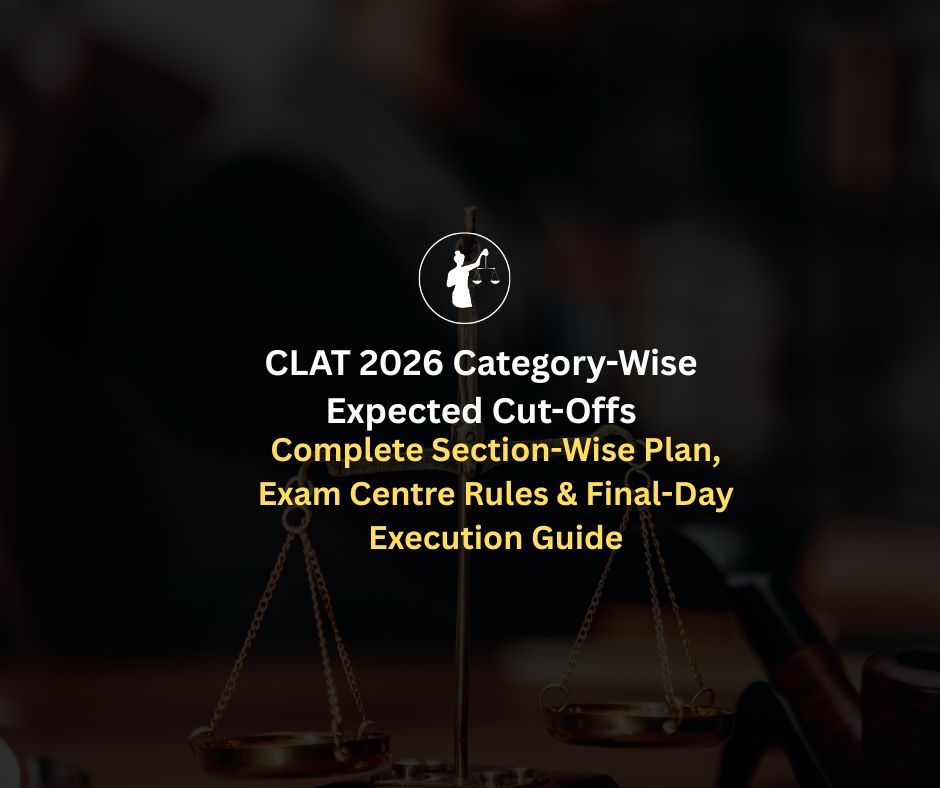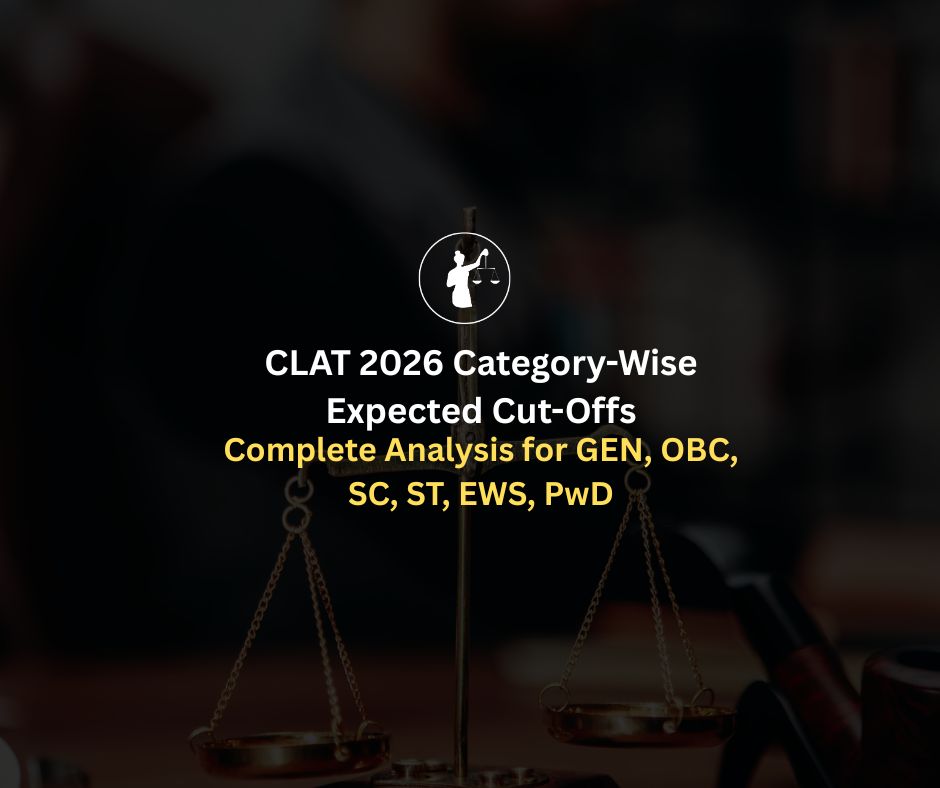Cracking CLAT 2026 isn't just about hard work, it's about smart strategy. Before diving into books or mock tests, one of the most crucial steps in your CLAT preparation journey is understanding the CLAT syllabus 2026 in detail.
Over the last few years, the CLAT pattern has evolved significantly. From passage-based questions to analytical reading and reasoning skills, the Consortium of NLUs has made it clear that CLAT is no longer a rote-learning test it's a test of how well you read, think, and apply logic.
( Note: Scroll Down and fill up the form for Free Mock Questions and Weekly Study Guides )
CLAT 2026 is expected to continue this trend, focusing heavily on comprehension and reasoning across all sections.
In this blog, we’ll break down the CLAT 2026 syllabus, section by section, and share actionable tips & tricks to help you build a focused and effective study plan.
Whether you're just starting out or fine-tuning your prep, this guide will give you a strategic edge.
CLAT 2026 Exam Pattern at a Glance
Before you create your preparation plan, you need to understand how the CLAT 2026 question paper is structured.
A smart approach to CLAT 2026 strategy begins with understanding the unique demands of each section.
While the exam is comprehension-heavy across the board, every subject area requires a tailored preparation style.
Here’s a breakdown of actionable, section-wise CLAT preparation tips to help you study smarter, not just harder.
CLAT’s English section tests your ability to read, analyze, and interpret complex texts. Instead of memorizing grammar rules, focus on building comprehension skills.
Tips:
Read editorials, opinion columns, and literary fiction daily to improve reading speed and vocabulary.
Focus on tone, argument structure, and inference in passages.
Learn vocabulary in context, not isolation — apps like Merriam-Webster Word of the Day can help.
Practice contextual grammar and sentence correction through mock passages, not isolated rules.
CLAT 2026 strategy tip: Make daily reading a non-negotiable habit. Your speed and accuracy here affect every section that involves reading — which is almost the entire paper.
This section demands awareness, not memorization. You’re tested on your ability to grasp the core issue in a passage, link it to relevant events, and infer logically.
Tips:
Stick to reliable sources: The Hindu, Indian Express, The Wire, PIB, and monthly current affairs compilations.
Focus on events from the last 12–18 months, especially those related to law, policy, and governance.
Practice daily note-making and revise weekly — this aids long-term retention.
Solve passage-based GK quizzes to simulate the exam format.
CLAT preparation tip: Don't try to memorize dates. Instead, understand the background and implications of events.
This is often the make-or-break section. You’ll be given a principle of law and a fact situation, and asked to apply the principle — no prior legal knowledge required.
Tips:
Focus on principle-based reasoning, not memorization.
Practice with past year CLAT and AILET legal sections to get familiar with question types.
Learn to spot the core legal issue in a passage quickly.
Time yourself while solving to simulate pressure.
How to prepare for CLAT Legal: Build the habit of reading carefully and logically — not just what is said, but how it's being applied.
This section requires deep thinking under time pressure. Unlike puzzles in other exams, CLAT’s logic questions are mostly text-based, focusing on arguments and assumptions.
Tips:
Practice critical reasoning: identifying arguments, assumptions, conclusions, and flaws.
Focus on passage-based logic questions, not traditional puzzles.
Use resources from GMAT/LSAT prep to strengthen reasoning.
Practice time management: aim for accuracy first, then increase speed.
CLAT 2026 strategy tip: Read the question before reading the passage. It helps you stay focused on what to look for.
Often skipped by humanities students, this section is simple — but can cost you marks if ignored. It's based on basic Class 10 maths, applied to charts, graphs, and data sets.
Tips:
Revisit percentages, ratios, averages, and time-speed-distance.
Solve at least one DI set daily to stay sharp.
Use estimation strategies to save time.
Focus on accuracy, negative marking can hurt if you rush.
CLAT preparation tip: Don’t avoid maths just because it’s your weak area. Practicing 15–20 minutes daily can improve your score dramatically.
Once you're familiar with the syllabus and exam pattern, the next challenge is building a consistent and effective routine.
The difference between average and top scorers often comes down to which resources they use, how they study, and how well they assess their progress.
If you’re serious about your CLAT 2026 preparation, here’s how to structure your journey with the right books, platforms, and strategies.
Choosing the right study material is half the battle won. Here's a curated list of CLAT best books and online sources that match the exam's comprehension-based format:
English & Vocabulary:
Word Power Made Easy by Norman Lewis
Editorials from The Hindu, Indian Express, and LiveMint
Current Affairs & GK:
Monthly magazines like Pratiyogita Darpan, or PDF digests by leading coaching platforms
Daily news analysis from The Hindu, Indian Express, or The Print
Legal Reasoning:
Legal Aptitude for the CLAT and Other Law Entrance Examinations by AP Bhardwaj
Previous year CLAT question papers
Logical Reasoning:
Critical Reasoning from GMAT/LSAT prep materials
Quantitative Techniques:
Class 10 NCERTs for quick revision
Online resources:
Consortium’s official sample papers and model tests
CLAT-specific platforms offering mocks, daily quizzes, and sectional tests
YouTube for topic-wise concept clarification (but choose reliable educators)
Whether you're a school student or a drop-year aspirant, you need a balanced plan that covers all sections weekly without burning you out.
Sample Weekly Structure:
English: 4–5 passages, 2 vocab reviews
Current Affairs: Daily reading + one weekly revision
Legal Reasoning: 5 passages/week + 2 PYQs
Logical Reasoning: 3–4 CR sets + theory practice
Quantitative Techniques: 3 DI sets + concept brush-up
Mocks: 1 full mock every 10 days (increase to weekly from August onwards)
Consistency is the key. Even 2 focused hours daily can create remarkable results if you stay consistent over 6–8 months.
Taking mocks is important but analyzing them is critical. A mock test should teach you something about your preparation, speed, or strategy every time.
What to track after each mock:
Accuracy vs. Speed
Sectional timing
Type of questions you’re getting wrong
Repetition of similar errors (especially in legal and logic)
Build a spreadsheet or journal to monitor patterns in your performance.
While many aspirants succeed with self-study, structured coaching gives you discipline, clarity, and direction. It removes the guesswork, helping you focus on what matters most.
If you find yourself stuck with too many resources or not enough clarity, it may be time to get professional guidance.
Looking for structured guidance?
Choose the Best CLAT Online Coaching that offers personalized mentorship, live doubt-solving, updated mocks, and legal reasoning workshops — so you're always ahead of the curve.
Cracking CLAT 2026 isn’t about rote learning or last-minute hustle. It's about approaching the syllabus with clarity, consistency, and smart strategy.
When you break the exam down section by section — and align your preparation accordingly you're already ahead of most aspirants.
A subject-wise approach helps you target your weaknesses, play to your strengths, and build the kind of exam temperament CLAT demands.
From mastering reading comprehension to applying legal logic, every part of the exam calls for focused, skill-based preparation.
Remember, success in CLAT 2026 comes to those who:
Understand the syllabus and pattern early
Build habits around reading and analysis
Practice mock tests and learn from every attempt
Revise strategically and consistently
And most importantly they start early.
If you’re serious about making it to your dream law school, don’t leave it to chance. Give yourself the advantage of time, resources, and expert support.
Start your CLAT 2026 journey with expert guidance and proven strategies. Don’t wait the earlier you start, the better you score.





